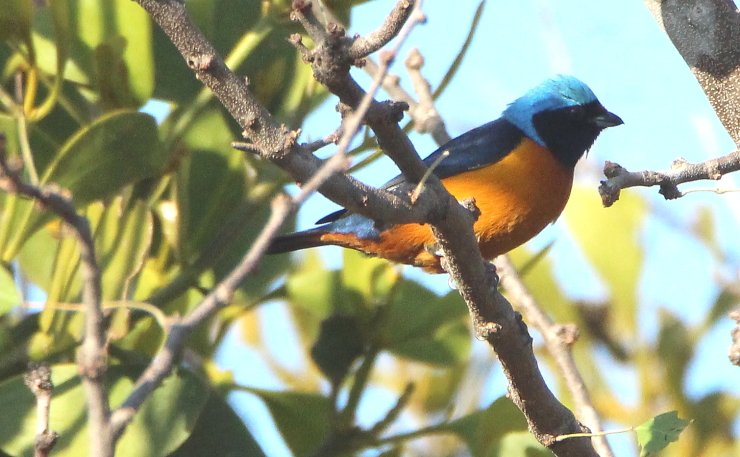
As I mentioned last week, 2021 is getting off to a bit of a slow start. You might imagine this is because of pandemic restrictions, but actually, that hasn’t been a big problem, as long as I keep my birding local. Instead, the problem seems to be the cumulative effects of two years of insufficient rains here. As I result, January gave me my slowest start for Michoacán in four years, as far as my number of species is concerned. As had happened in the year’s first two weeks, my third outing was less affected than the fourth.
Oddly enough, the effect of our hydrological deficit seemed to be less in Paso Ancho, which is normally quite a dry place. I missed some regulars, but they were replaced by surprise species. The area around this town, at a tropical altitude of “only” 1,000 feet, is characterized by rather drab thorn forest. But many of the area’s endemic birds seem determined to make up for the drabness of their habitat.
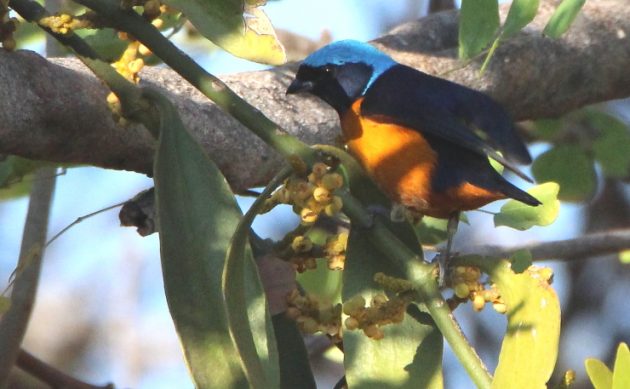
What bird is brighter than the Elegant Euphonia? Unlike this article’s header photo, this second shot shows the mistletoe berries which are this species’ favorite food.
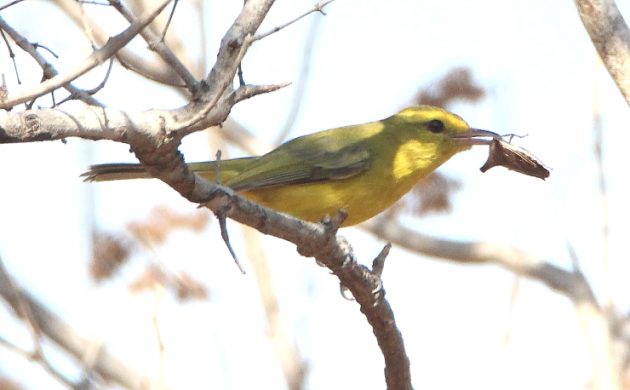
The Golden Vireo is about as colorful as a Vireo can be. And the thorn-imitating bug it was eating was pretty cool, too.
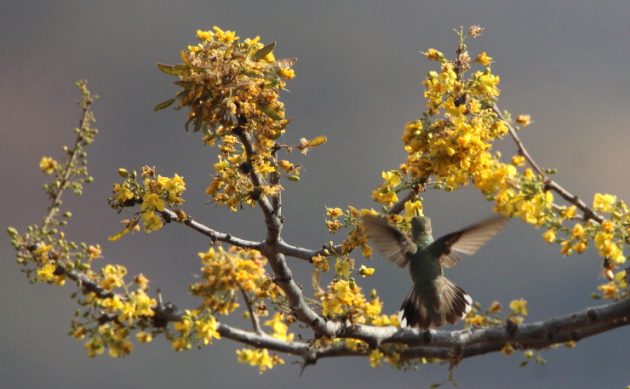
Dusky Hummingbirds, true to their name, are not very colorful. So this one let its food source do the heavy lifting.

And I can always count on seeing some colorful Streak-backed Orioles in Paso Ancho.
And, for the best color of the day, there were the very best Buntings for which I could hope! The day’s photos weren’t the exceptional, but I never look a gift Orange-breasted or Painted Bunting in the mouth.
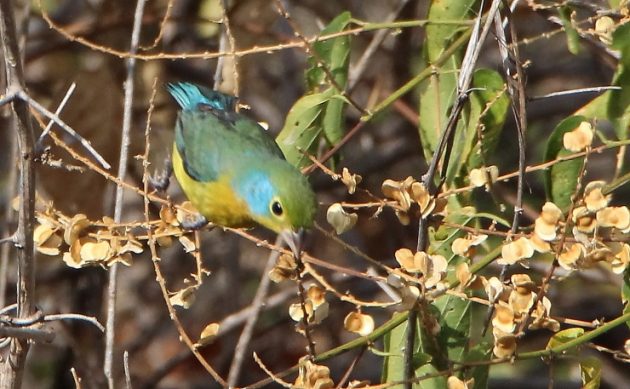
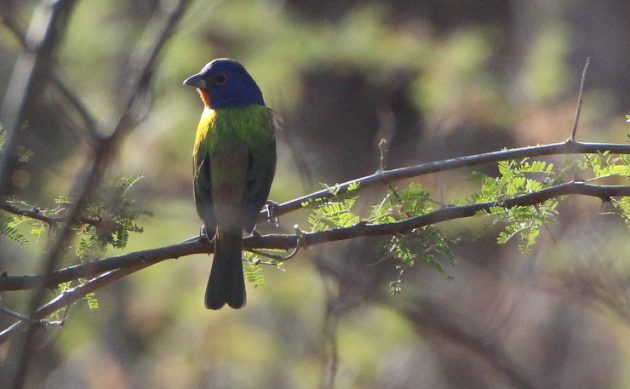
In spite of all this colorful finery, my most exciting bird of the day was a decidedly plain Eastern Phoebe. It wasn’t a lifer — I had seen one on Mexico’s east coast several years before — but it was a big surprise to find one in Michoacán. It turns out they also winter in my state. Who knew?
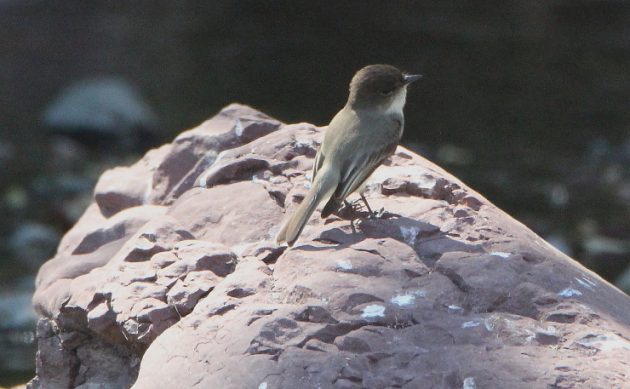
My fourth outing for the year was to the area around La Escalera. This area did seem to be suffering quite a bit from the drought. But since I only discovered it in March of last year, it may just be that January is a slow month there. All I know for sure that there were many birds concentrated around one stream that still has water, where the thick brush did not allow me to ID them. So that was frustrating.
Still, there were plenty of beauties (or plainer species, posing beautifully) to rescue the day for me. One group that was mostly absent was the hummingbird family. These were plentiful and varied, only a month earlier. But almost all the salvias and other food plants they visit have ended their life cycle now, and the hummers seem to have moved on. So I will have to show you colorful birds from other families.
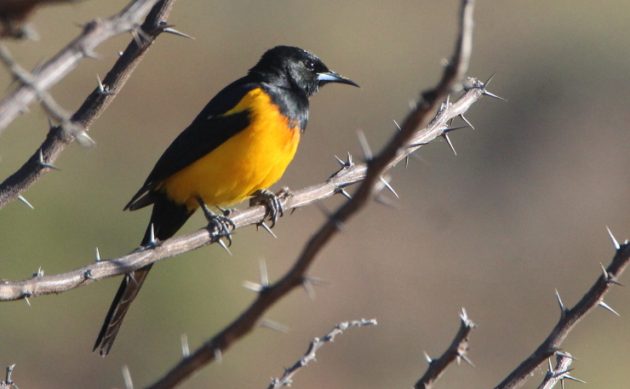
It’s no surprise to see a Black-vented Oriole at this site. But it is unusual to be able to clearly see its black eye on its black head.
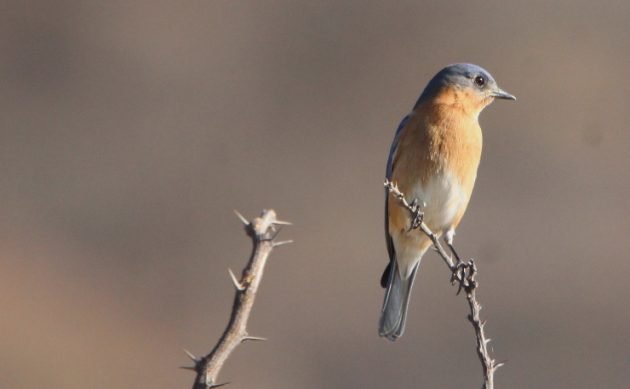
Eastern Bluebirds are surprisingly common in central Mexico.
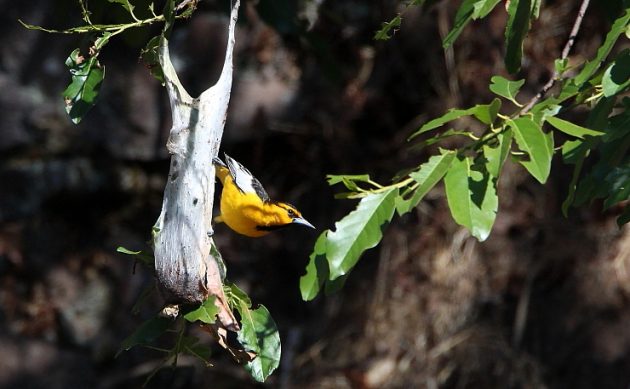
This migratory Bullock’s Oriole spent a long time feeding on some tent caterpillars.
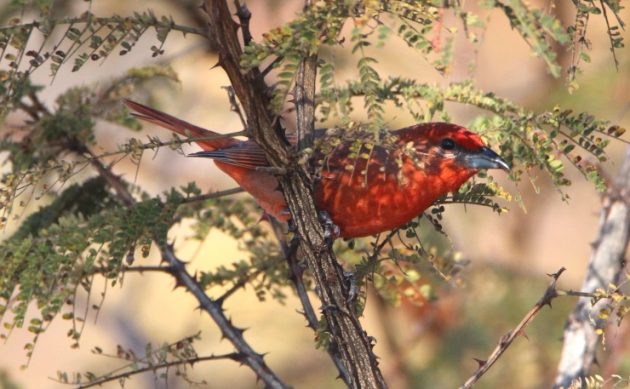

Some might consider the Hepatic Tanager to be a poor man’s Summer Tanager. This Hepatic begs to disagree. (If you want to know how to tell the difference between the two, it’s all in the bill color. The Summer Tanager’s bill is bone colored.)
And yet, once again my most exciting bird of the day was not the showiest one. Gray Flycatchers can be very hard to pick out among their Empidonax clan, but I’m pretty sure this was one:
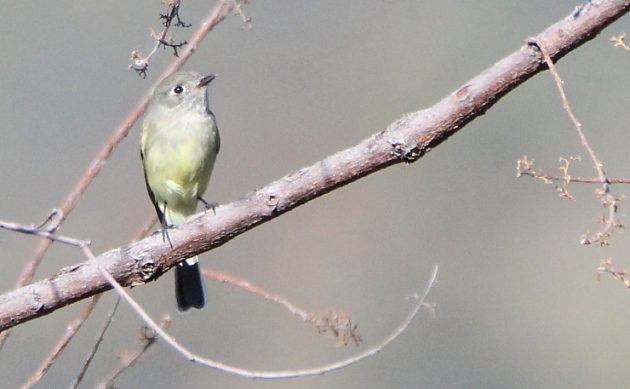
The good news, for me, is that February 2021 is off to a good start. But I will leave that report for a later day. And there is always the possibility that the current La Niña weather pattern will give way, and allow us better summer rains this year.
Meanwhile, I wish you all much good and safe birding for 2021!











Leave a Comment